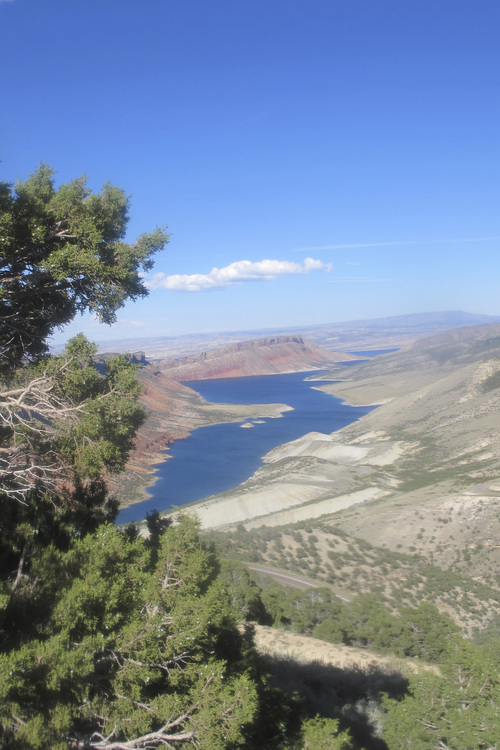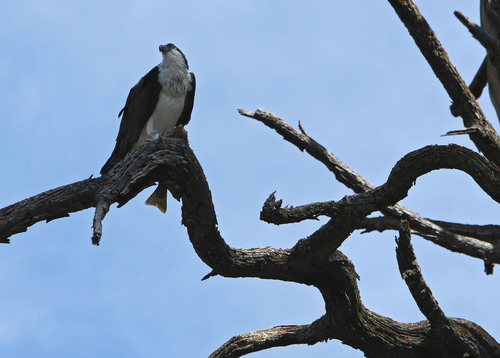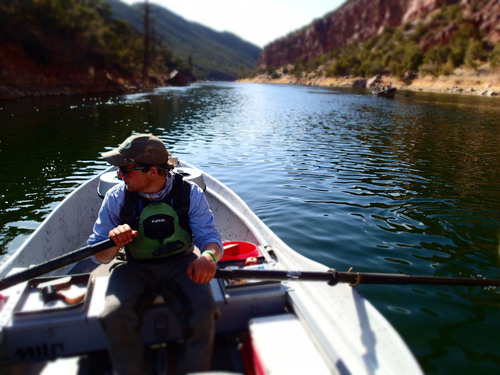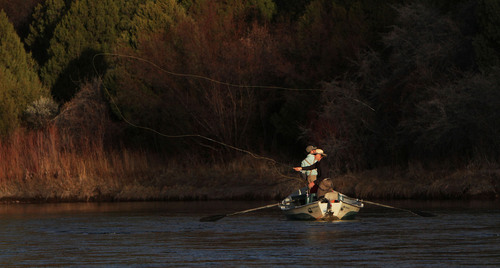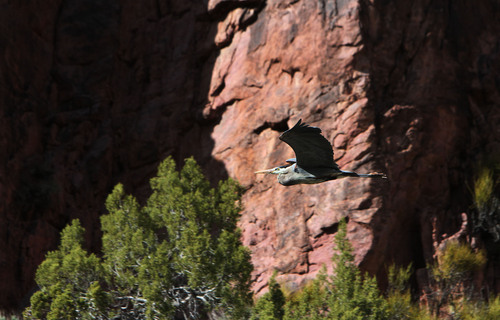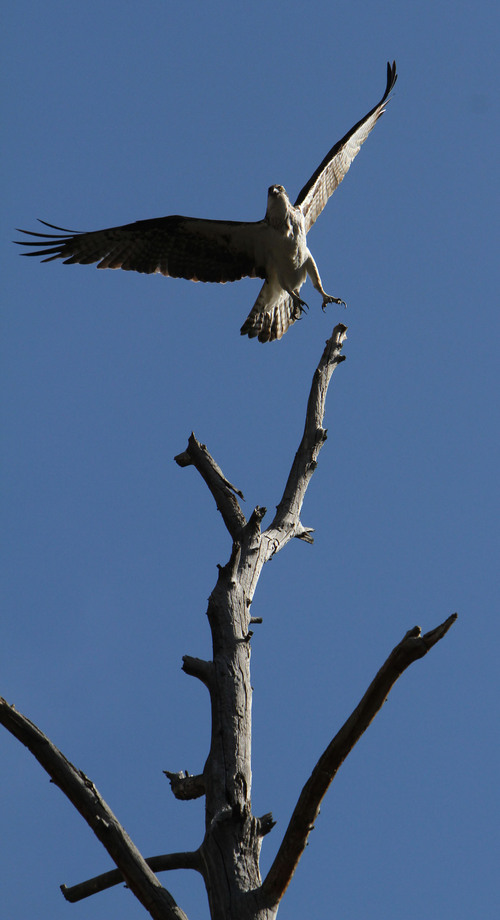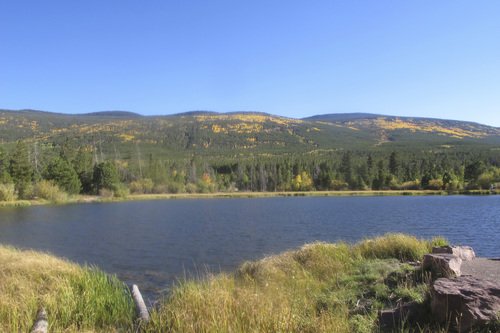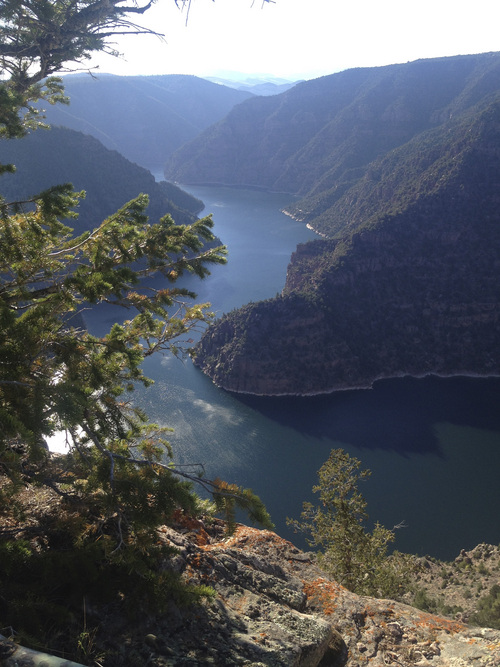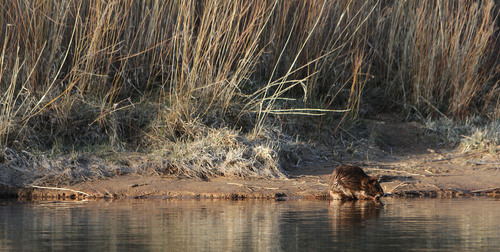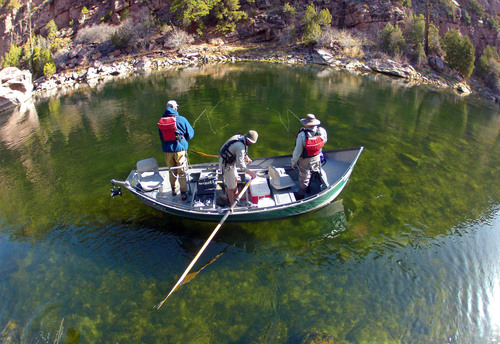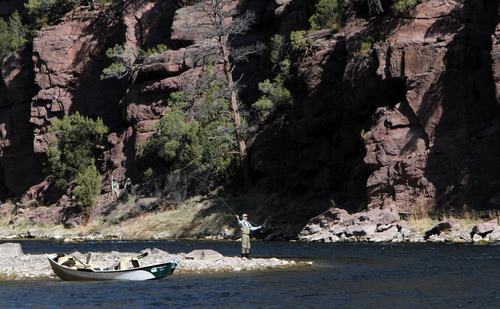This is an archived article that was published on sltrib.com in 2014, and information in the article may be outdated. It is provided only for personal research purposes and may not be reprinted.
Manila • Karen Perry knows firsthand the power of Flaming Gorge National Recreation Area.
The landscape, people and outdoor lifestyle pulled her family back again and again until they finally bought a trailer and parked it on property near Manila.
Now a county commissioner, Perry and others believe if they can just get people to visit their spot in the rugged and remote northeastern corner of Utah, they'll come back.
The Daggett County commissioners are hoping Congressman Rob Bishop's Public Lands Initiative will help them put that tourism and economic development strategy into play.
In trade for designating additional wilderness lands in the High Uintas, county leaders hope to build additional resorts along the reservoir and a ski hill on the horizon.
"Our businesses have not been doing quite so well as they did in the '70s and '80s," Perry said. "We are trying to garner new interests and other activities that will bring more people to our beautiful county."
The idea of another ski area in Daggett County — population 1,059 in the 2010 Census — may raise eyebrows along the Wasatch Front, but it's the kind of bucket list item Utah counties are floating as part of Bishop's far-reaching legislative push. Daggett County is one of the first to put its plan on paper.
The Public Lands Initiative, also backed by Utah congressmen Jason Chaffetz and Chris Stewart, has been pitched as a way to "bring resolution to some of the most challenging land disputes in the state of Utah," according to a staff report. Bishop, the report says, is hoping to prove that conservation and economic development can coexist in Utah.
Proposals in Daggett County include designating wilderness, swapping land between federal and state agencies to allow commercial development and securing designation for the Green River under the Wild and Scenic Rivers Act.
"Daggett County moved quickly," Bishop said. "When you have a county that is only 4 percent private [land], you need a funding source. They have a unique need."
The vast majority of land in Daggett County — 89 percent — is managed by federal agencies.
All told, the Daggett County Commissioners approved setting aside more than 80,000 acres for wilderness designation. The largest chunk, 45,760 acres, would expand the High Uintas Wilderness Area.
Wilderness advocates have suggested adding another 28,000 acres to the High Uintas Wilderness Area from neighboring Summit County.
The Utah portion of the Bureau of Land Management's Diamond Breaks Wilderness Study Area along the Colorado border would become designated wilderness. Other lands in the same area also are being considered for designation.
Promoting a wilderness designation in rural Utah is a daunting task, but Perry said Bishop's efforts are coming at a time when people are willing to listen.
"Nobody likes to hear that 'W' word. The immediate connotation is that rights are immediately lost," Perry said. But, "these were areas that were roadless anyhow.
"This is a huge step for this county."
Perry said the commission has been studying the impact of a wilderness designation on cattle grazing allotment holders, another important economic driver in Daggett County.
"Some have told us they actually prefer dealing with wilderness rather than regular BLM," she said. "The rules are more defined and clear."
In exchange for the possible wilderness designations, Daggett County is asking for land exchanges that would could lead to commercial ventures on the shores of Flaming Gorge Reservoir and in the forest.
One of the swaps would open up 6,800 acres of forest along State Road 44 for a resort. Perry said there has been interest from a developer in creating a summer and winter — including a ski hill — compound with some private residences. In its proposal, Daggett County asks the Forest Service to transfer ownership of the land to the county which would then put it on the market.
Two historic sites — the John Jarvie Ranch (managed by the BLM) and the Swett Ranch (managed by the Forest Service) — would be transferred and "purchased by private interests."
The Green River below Flaming Gorge, world-renowned for its fly fishing and stunning scenery, may also benefit from a proposal submitted for Bishop's plan.
Daggett County is proposing that the "A" and "B" sections of the river be designated as scenic, a change several nonprofit groups have been advocating for a while.
"I have gone door-to-door in the county and saw a large majority of residents in favor of scenic designation as a means to keep it like it is today," said Charles Card, Green River and Public Lands Organizer for Trout Unlimited in Utah.
"Bishop's bill is far from being anywhere except the planning stages, but Daggett county is pursuing their plan within that concept," Card added.
Perry says a scenic designation will "put the Green River on many more maps" and "protect our guides and their use of the river from any change in Forest Service policies."
Daggett County leaders finalized the county's plan and forwarded it to Bishop's office. Now, they can sit back and watch as Bishop's Public Lands Initiative moves forward. Less than a dozen of Utah's 29 counties are participating, most in eastern Utah.
"I'm pleased with [Daggett's] effort to make something that is workable," Bishop said last week, "but we still have a ways to go before anything is finalized."
There is some risk to being first.
Daggett County leaders feel some trepidation that things might not go as they have planned.
The two historic properties are causing them the most heartburn; they don't want management of the ranches to end up falling into their hands.
"We want to see how the final language comes back," Perry said. "Our fear is that it might not go through as we intended."
Twitter: @BrettPrettyman


